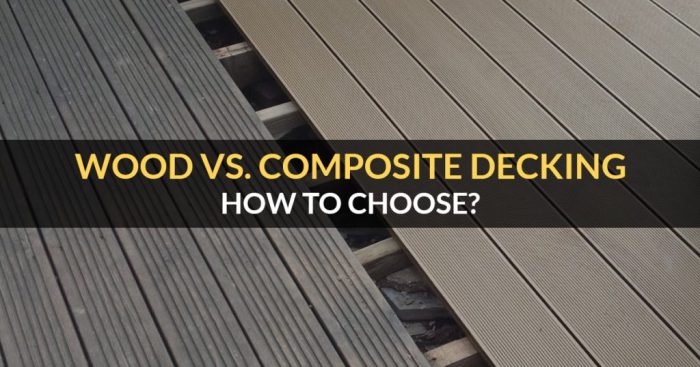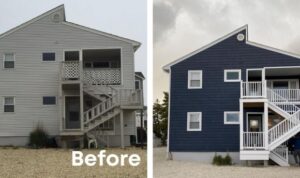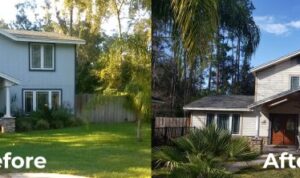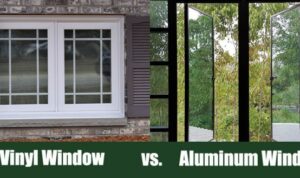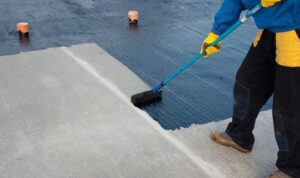Exploring the differences between composite and wood decking, this introduction sets the stage for a detailed comparison that will help you make an informed decision for your outdoor area.
As we delve deeper into the benefits, costs, aesthetics, installation process, and durability of both options, you'll gain valuable insights to guide your decking choice.
Benefits of Composite Decking vs Wood Decking
Composite decking offers several advantages over traditional wood decking, making it a popular choice for many homeowners. Let's explore the key benefits of composite decking compared to wood.
Durability
Composite decking is known for its exceptional durability. Unlike wood, composite materials are resistant to rot, decay, and insect damage. This means that composite decking lasts much longer than wood, requiring minimal maintenance over its lifespan.
Maintenance
One of the biggest advantages of composite decking is its low maintenance requirements. Unlike wood, composite decking does not need to be stained, painted, or sealed regularly. Simply cleaning the surface with soap and water is usually sufficient to keep composite decking looking great for years to come.
Environmental Impact
Using composite materials for decking can have a positive impact on the environment. Composite decking is often made from recycled materials, such as plastic and wood fibers, reducing the demand for new timber. Additionally, composite decking does not require the use of harmful chemicals for maintenance, making it a more eco-friendly choice compared to wood decking.
Cost Considerations
When considering whether to choose composite decking or wood decking for your outdoor space, cost is a significant factor to take into account. The initial cost, long-term implications, as well as maintenance and repair costs can all vary between the two options.
Initial Cost Differences
When it comes to the initial cost of installation, composite decking tends to be more expensive than wood decking. The materials used in composite decking are often higher in quality and durability, leading to a higher upfront cost. On the other hand, wood decking is generally more affordable initially, making it an attractive option for those on a tighter budget.
Long-Term Cost Implications
While the initial cost of composite decking may be higher, it is important to consider the long-term cost implications. Composite decking is known for its durability and resistance to rot, decay, and insects, which can result in lower maintenance and repair costs over time.
Wood decking, on the other hand, may require more frequent maintenance, such as staining, sealing, and repairs, which can add up in costs over the years.
Cost of Maintenance and Repairs
In terms of maintenance and repairs, composite decking generally requires less upkeep compared to wood decking. Composite decking does not need to be stained or sealed, and it is resistant to fading, staining, and mold growth. This can result in lower maintenance costs over the lifespan of the deck.
Wood decking, however, may require regular maintenance such as staining, sealing, and repairs to keep it looking its best, which can add to the overall cost of ownership.
Aesthetics and Design Options
When it comes to decking materials, aesthetics and design options play a crucial role in determining the overall look and feel of your outdoor space. Both composite and wood decking offer unique design features that cater to different preferences and styles.Composite decking is known for its exceptional design versatility, allowing homeowners to choose from a wide range of colors, textures, and finishes.
Whether you prefer the look of natural wood grains or contemporary solid colors, composite decking offers endless design possibilities. Additionally, composite decking can mimic the appearance of exotic hardwoods or traditional timber, providing a high-end look without the maintenance requirements of real wood.On the other hand, wood decking is celebrated for its classic and timeless aesthetic appeal.
The natural look and feel of wood create a warm and inviting atmosphere, perfect for creating a rustic or traditional outdoor space. Wood decking also develops a unique patina over time, adding character and charm to your deck.
Design Versatility of Composite Decking
Composite decking offers a wide array of design options, including:
- Various colors ranging from natural wood tones to modern hues
- Different textures such as embossed wood grain or smooth finishes
- Customizable finishes like capped composites for enhanced durability
Aesthetic Appeal of Wood Decking
Wood decking provides a classic and natural look with features like:
- Beautiful wood grains that add warmth and character
- Natural patina development over time for a unique finish
- Rich color variations that complement outdoor surroundings
Installation Process
When it comes to installing decking, whether composite or wood, the process can vary in terms of complexity and tools required. Let's delve into the specifics of each to understand the differences better.
Composite Decking
Installing composite decking typically involves the following steps:
- Prepare the substructure: Ensure the joists are level and properly spaced according to manufacturer guidelines.
- Secure the deck boards: Use specialized composite decking screws to attach the boards to the joists. Some composite decking systems may feature hidden fastening systems for a seamless appearance.
- Trim and finish: Cut and trim the deck boards as needed to fit the layout, and add finishing touches like fascia boards and railing systems.
Wood Decking
The installation process for wood decking is somewhat similar but may require additional steps:
- Prep the wood: Treat the wood with a sealant or stain to protect it from the elements and prolong its lifespan.
- Secure the boards: Use galvanized or stainless steel screws or nails to attach the wood boards to the joists.
- Maintenance: Wood decking may require more ongoing maintenance, such as sanding, staining, and sealing, to prevent rot and decay.
Overall, the installation process for composite decking is often considered easier and faster than wood decking due to the use of specialized fastening systems and the lower maintenance requirements. However, both options can result in a beautiful and functional outdoor living space with the right installation techniques.
Durability and Longevity
When considering decking options, durability and longevity are key factors to take into account. Let's explore how composite decking compares to wood decking in terms of lifespan, resistance to environmental factors, and maintenance requirements.
Lifespan Comparison
Composite decking generally has a longer lifespan compared to wood decking. While wood decks can last anywhere from 10 to 30 years with proper maintenance, composite decking can last upwards of 25 to 30 years or more. This extended lifespan is due to the durable nature of composite materials, which are designed to withstand harsh weather conditions and heavy foot traffic.
Resistance to Environmental Factors
Composite decking is highly resistant to factors like rot, mold, and insects, which are common issues that affect wood decking. The synthetic materials used in composite decking are immune to moisture damage, preventing rot and mold growth. Additionally, composite decking does not attract insects like termites, ensuring that the structure remains intact over time.
Maintenance Practices
Maintaining composite decking is relatively easy compared to wood decking. Regular cleaning with soap and water is usually sufficient to keep composite decking looking fresh and new. On the other hand, wood decking requires regular sealing, staining, and sanding to prevent issues like rot and decay.
By following manufacturer guidelines for cleaning and maintenance, both composite and wood decking can remain in top condition for years to come.
Conclusion
In conclusion, the debate between composite and wood decking offers a multitude of factors to consider. By weighing the pros and cons Artikeld in this discussion, you can select the decking material that best suits your needs and preferences.
FAQs
Is composite decking more durable than wood decking?
Composite decking is generally more durable than wood decking as it is resistant to rot, mold, and insects, ensuring a longer lifespan.
What are the initial cost differences between composite and wood decking?
Composite decking typically has a higher initial cost compared to wood decking, but the long-term maintenance savings may offset this difference.
Are there more design options with composite decking?
Composite decking offers a wide range of design options, including various colors, textures, and finishes, providing greater versatility compared to wood decking.
How complex is the installation process for composite decking?
The installation process for composite decking can vary but generally involves using specific tools and following manufacturer guidelines for optimal results.
What maintenance practices are needed to ensure the longevity of wood decking?
Regular maintenance for wood decking includes staining, sealing, and protecting it from moisture to prevent decay and prolong its lifespan.

